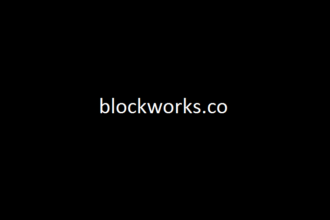This is a segment from the 0xResearch newsletter. To read full editions, subscribe.
About 20 months after its initial announcement, Uniswap v4 quietly rolled out over the past weekend on 12 chains.
Uniswap v4 is a big deal for the simple reason that it threatens to turn one of DeFi’s most essential primitives — DEXs — into a cheap commodity.
For the longest time, Uniswap competitors have tried to appeal to users with incrementally innovative and piecemeal features like dynamic fees (Trader Joe), providing out-of-range liquidity into money markets (Balancer), MEV internalization (Skip), etc.
Uniswap’s response: Build whatever DEX you like on v4.
That’s possible thanks to v4’s primary innovation of “hooks.” Hooks are separate smart contracts “attached” to Uniswap liquidity pools, enabling developers to implement custom DEX logic that triggers based on certain behaviors.
For example, Uniswap v3 pools are bound by predefined fee tiers. Now, v4 liquidity pool deployers can customize their pool logic with dynamic fee curves that adjust based on variables like volatility. They can even punish LPs with a fee when they withdraw liquidity.
Liquidity pools could be designed to deposit unused liquidity into Aave to generate a yield for LPs, or implement KYC features like NFT-gating or time-gating (so pools are tradable only within certain hours).
Devs can even introduce a “fee switch” without having to wait for Uniswap protocol to do so. The possibilities are endless.
V4 hooks, in effect, let liquidity pool deployers act as their own “DEX.”
For an example of hooks in action, look to Flaunch — a new memecoin launchpad on Base.
When tokens pre-launch on Flaunch, they can be bought at a fixed price for 30 minutes. After 30 minutes, all remaining tokens are sold and the memecoin is launched on the open market.
Unlike pump.fun, however, 100% of trading fees are paid to creators and buybacks (the exact ratio depends on the creator). Buybacks take place when tokens collect 0.1 ETH in trading fees.
Using hooks, Flaunch was able to integrate this custom logic into every Uniswap v4 liquidity pool that a memecoin is launched on (there are already thousands).
Flaunch has launched 2,135 tokens, generated $75.6 million in v4 trading volumes, and paid back 51 ETH since its inception last Friday.
According to HookRank.io, 24 hooks have been deployed, with the overwhelming majority of TVL ($2.3 million) in Flaunch’s hook contracts.
Then there’s Bunni DEX. It slaps a “rehypothecation hook” on top of v4 to route LP capital to lending protocols for more profitable LP strategies. There’s also Doppler, a liquidity bootstrapping protocol by Whetstone Research that simply builds auctions on top of v4 contracts.
Another upcoming innovation on v4 hooks is the Angstrom DEX by Sorella Labs. Angstrom is implementing a v4 hook that seeks to mitigate MEV leakages to L2 sequencers by protecting LPs against CEX-DEX arbitrageurs (loss-vs.-rebalancing) and traders against MEV attacks.
Based on this directory, there are about 24 active projects building on v4 hooks.
With v4, Uniswap is no longer a liquidity pool launchpad. Uniswap has effectively become a spot DEX launchpad.
Start your day with top crypto insights from David Canellis and Katherine Ross. Subscribe to the Empire newsletter.
Explore the growing intersection between crypto, macroeconomics, policy and finance with Ben Strack, Casey Wagner and Felix Jauvin. Subscribe to the Forward Guidance newsletter.
Get alpha directly in your inbox with the 0xResearch newsletter — market highlights, charts, degen trade ideas, governance updates, and more.
The Lightspeed newsletter is all things Solana, in your inbox, every day. Subscribe to daily Solana news from Jack Kubinec and Jeff Albus.
Blockworks: News and insights about digital assets. – Read More









